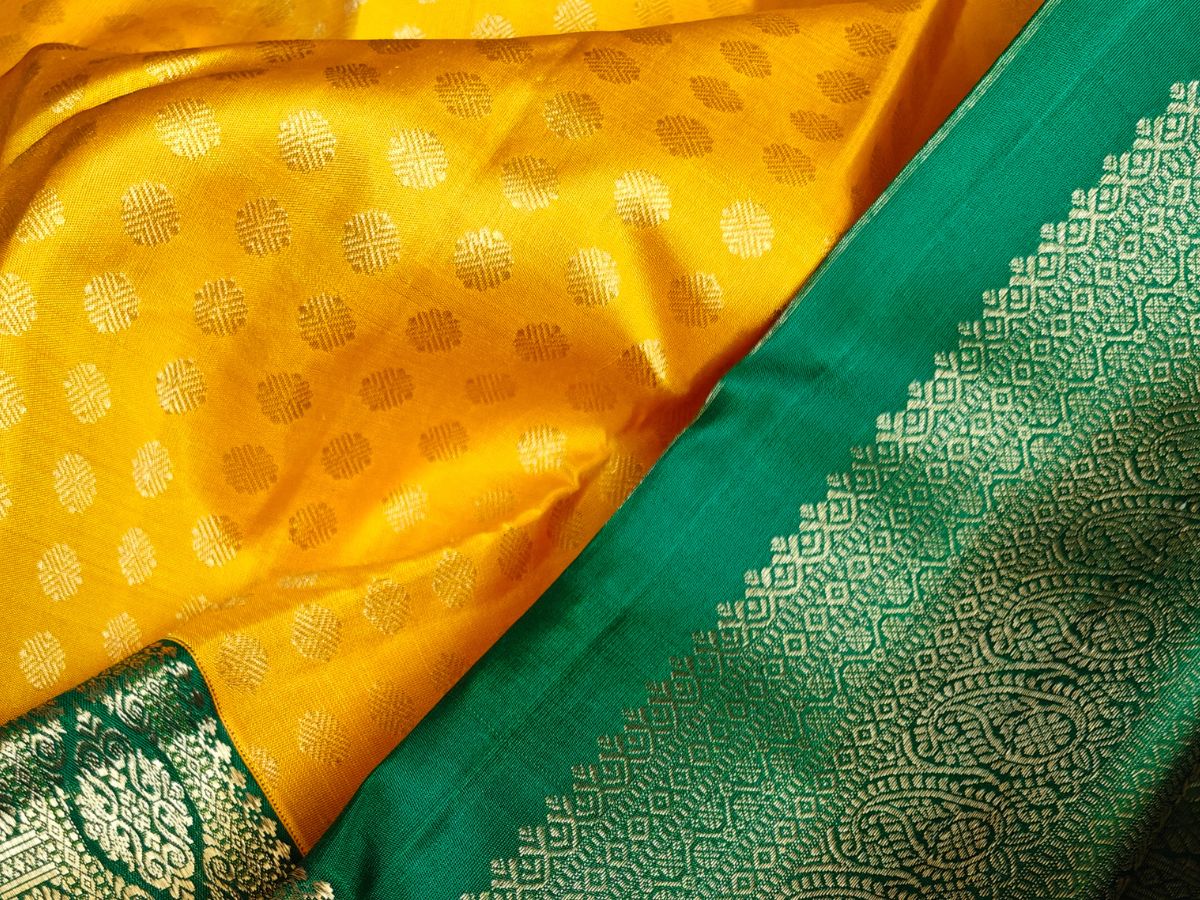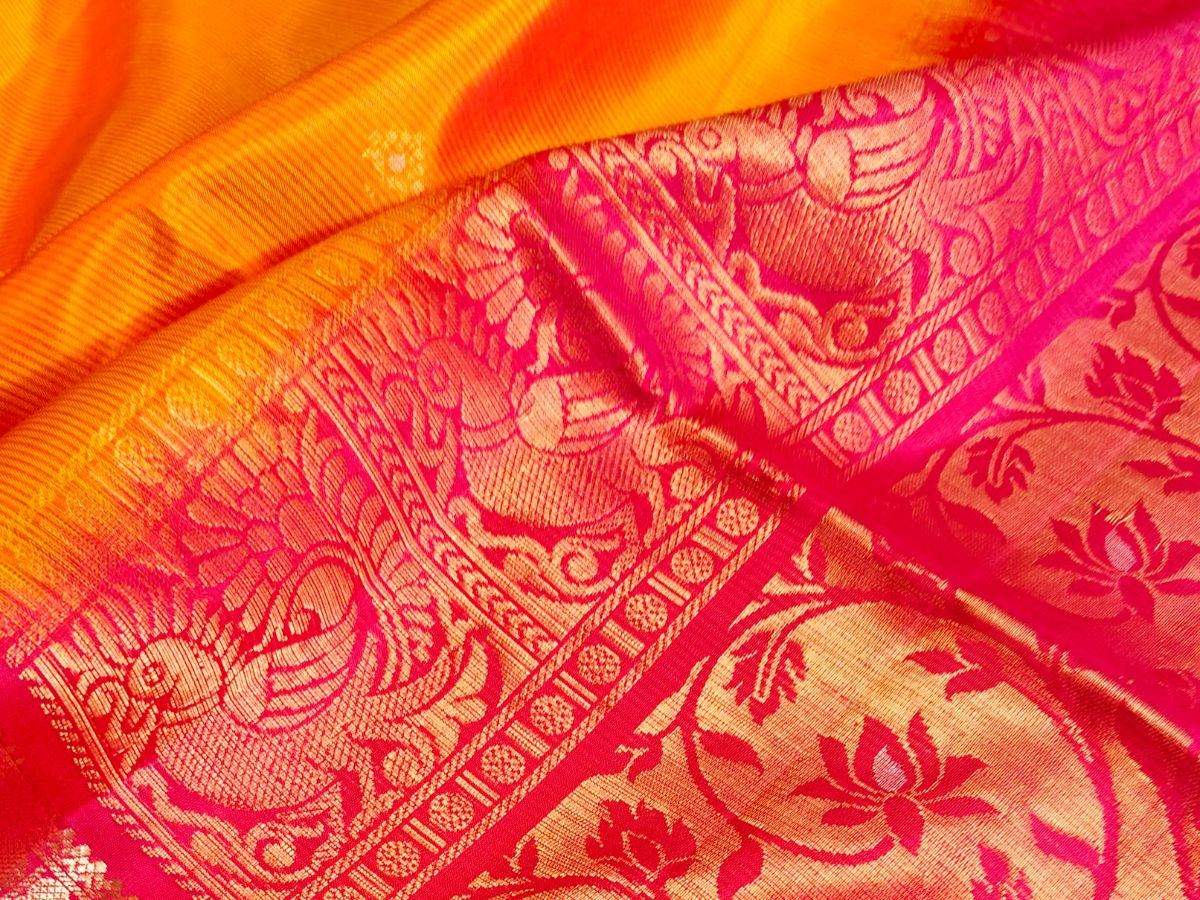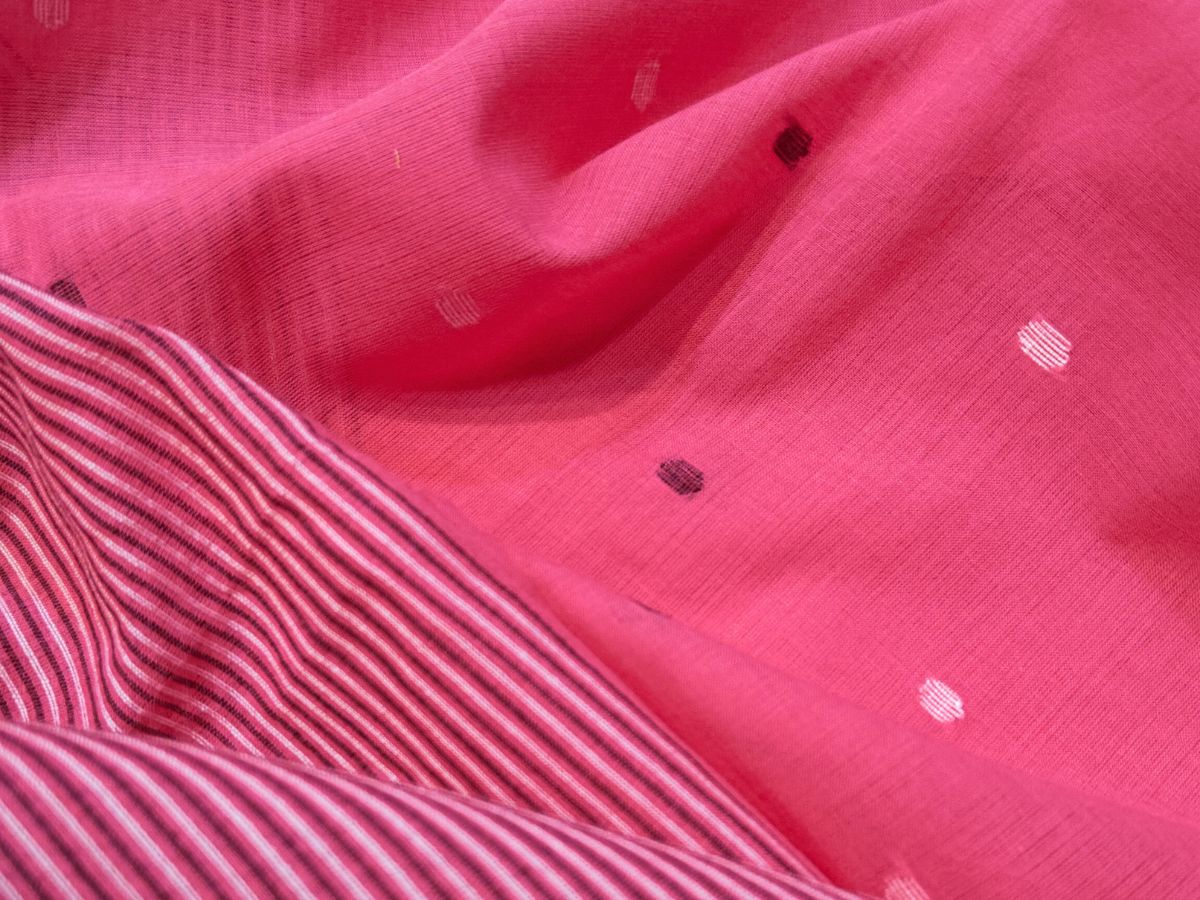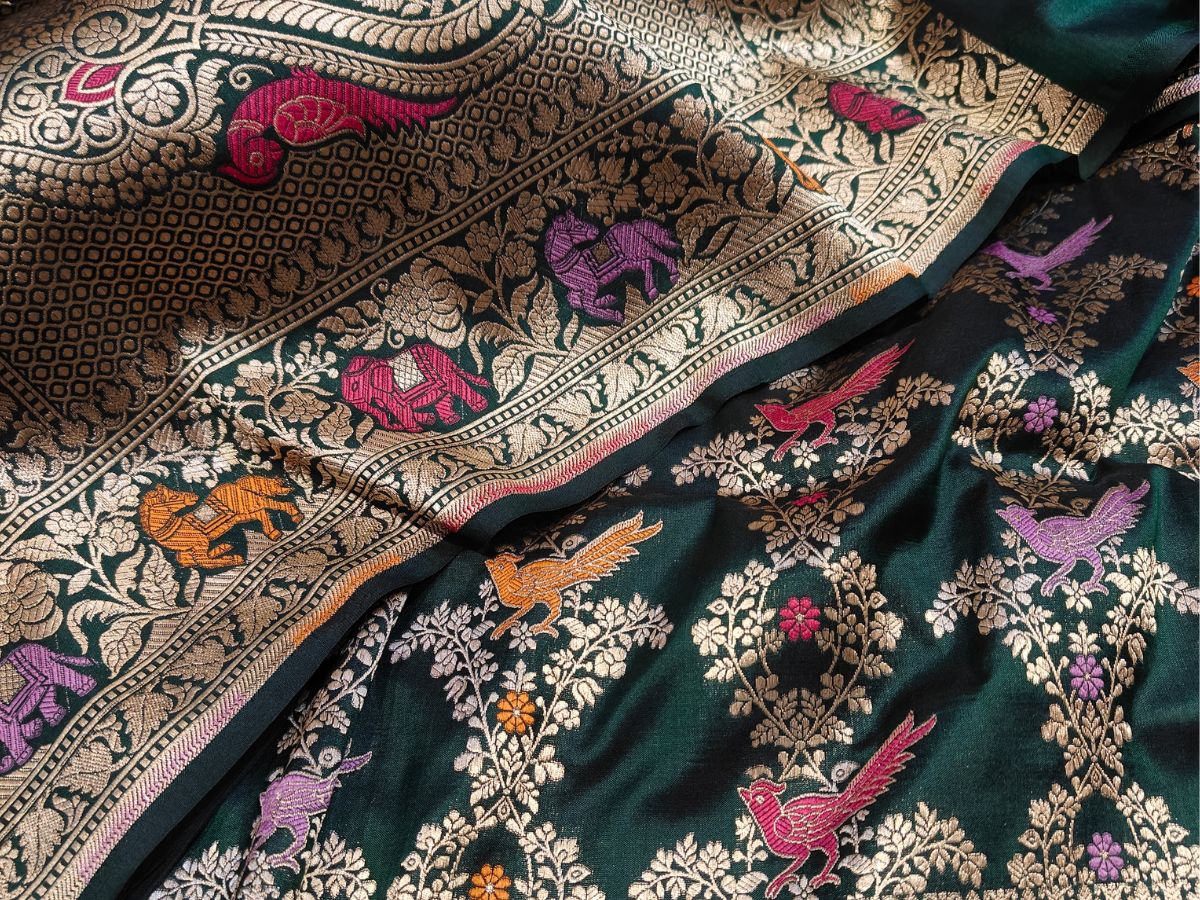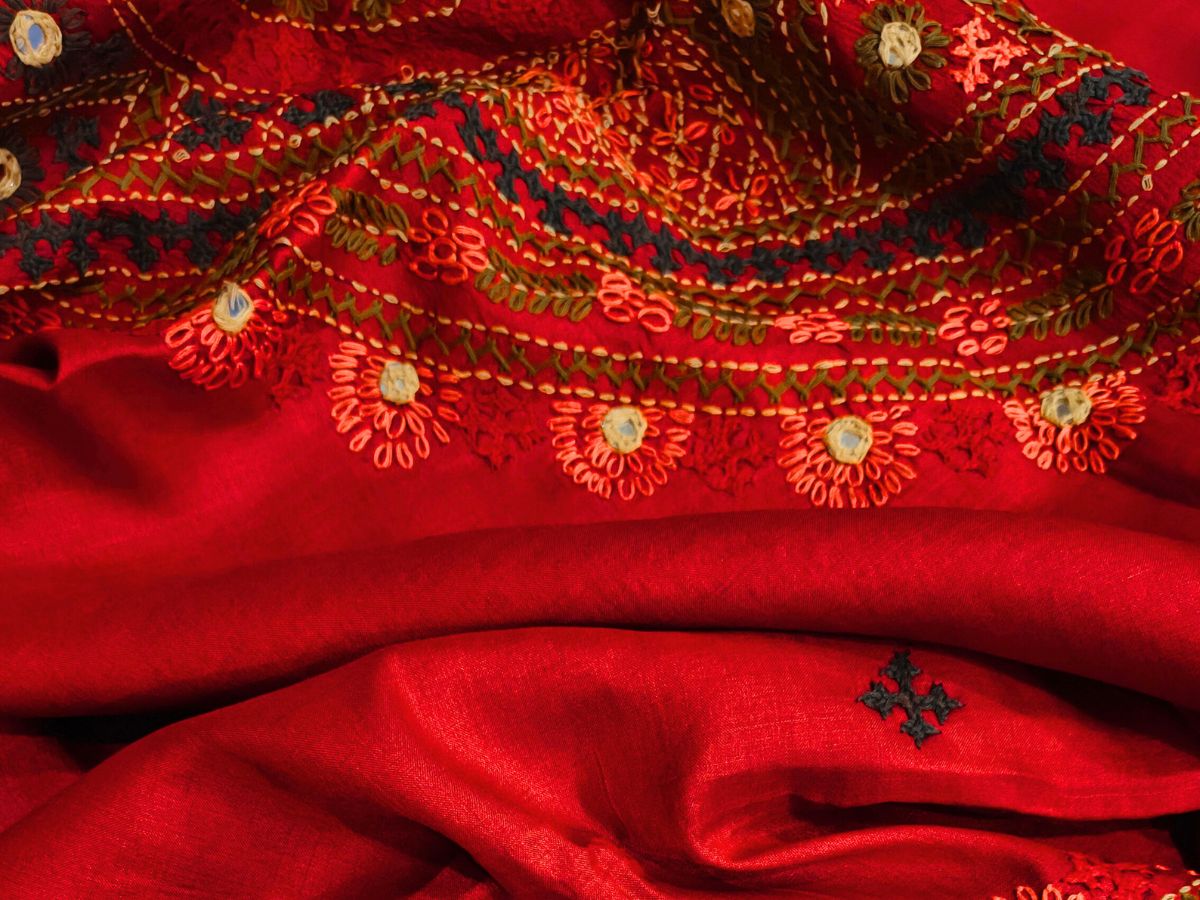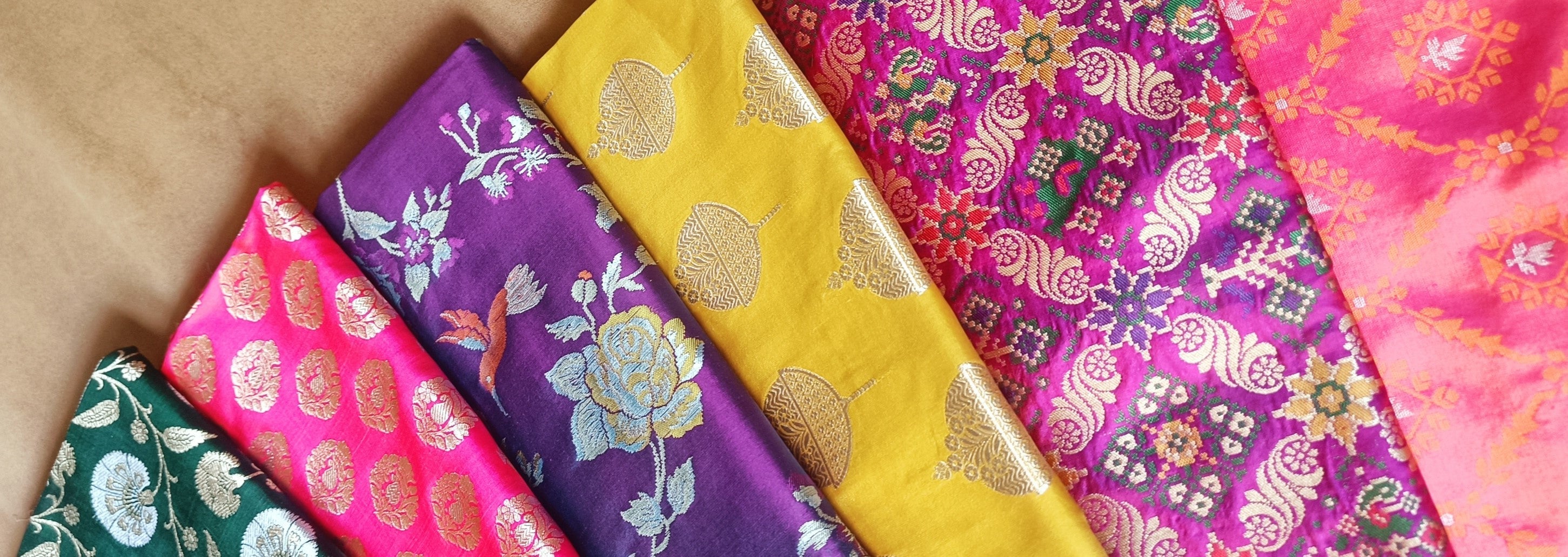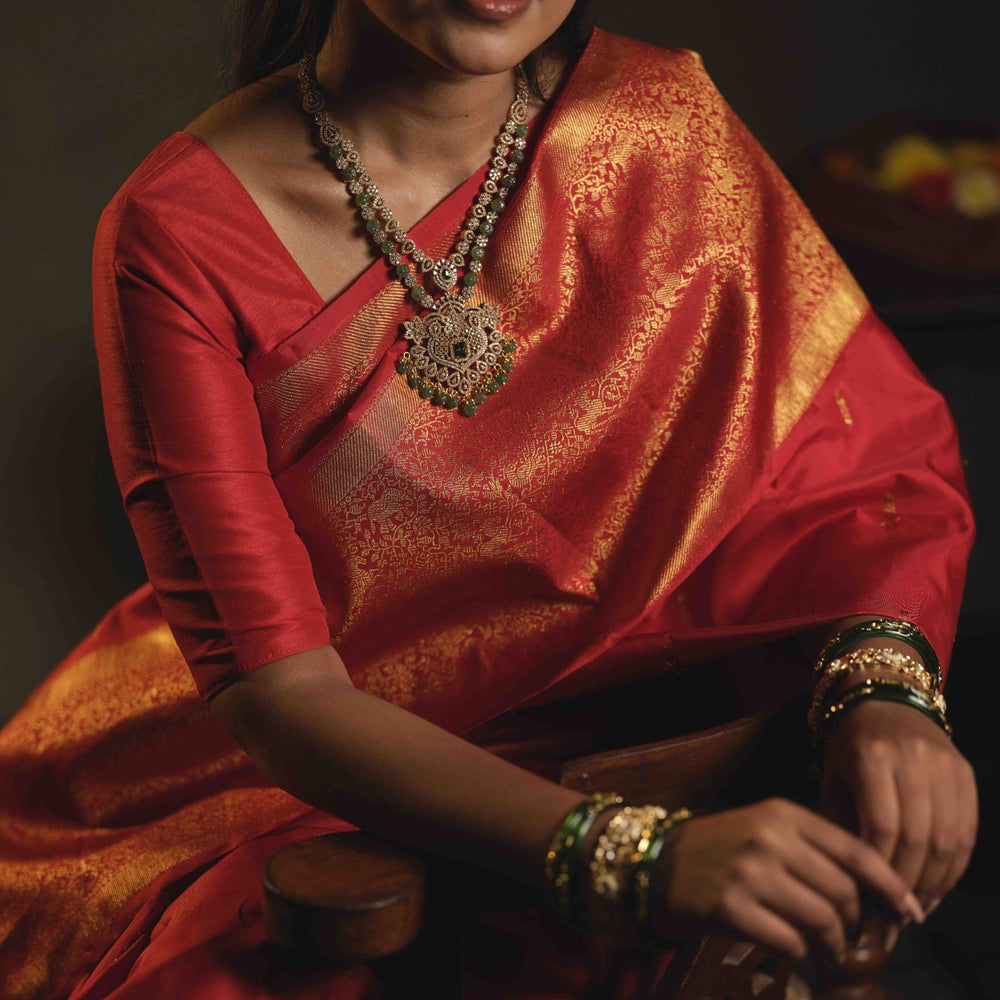Spill the Silk! India’s Hottest Handlooms You Need to Know
If you’ve ever been to a wedding and caught yourself admiring someone’s saree instead of the bride, you're not alone. Because there’s something truly magical about Indian handloom sarees—the richness of the colors, the intricate weaves, the way the fabric flows and tells stories of history, heritage, and culture. And let’s be real—pure silk sarees have that unmatched charm that no fast-fashion ensemble can offer.
Now, you’ve probably heard of the big names like Kanjivaram silk sarees or the edgy, geometric Pochampally sarees, and yes, South Indian silk sarees are totally iconic. But India’s weaving legacy goes way beyond the southern looms. From the glowing gold threads of Banaras to the whisper-soft cottons of Bengal, every region has its own style, its own statement, and its own soul stitched into six yards of grace.
But how do you know what’s what? What makes a Kanchipuram silk weaver’s creation different from, say, a Chanderi saree? How can you spot the features of an original Kanjivaram silk saree, and what exactly is a double ikat Patola?
Welcome to your ultimate, no-jargon, full-swagger guide to buying pure handloom sarees. Whether you’re a bride-to-be, a college kid planning your first ethnic day outfit, or a quiet admirer of textiles looking to dive deeper—this blog is your backstage pass into the diverse, dazzling world of Indian weaves. Get ready to meet the best handwoven silk sarees in India, understand types of Indian sarees and weaving techniques, and most importantly, find the one that speaks to you.
South India: Drama, Detail & Decades of Weaving Glory
Let’s begin our saree tour in the south, where silk is not just a fabric—it’s a legacy. Kanjivaram sarees, woven in Kanchipuram, Tamil Nadu, are basically royalty. They’re known for their heavyweight silk, vibrant jewel tones, and real zari (gold and silver threads). These sarees are crafted using the korvai technique—where the body and border are woven separately and then fused, by hand. No shortcuts, no machines.
Want to wear tradition with a bold twist? A Kanjivaram with temple motifs and contrast borders has got your back. Planning to go vintage Bollywood glam? Add some gold bangles and a bindi, and you’ve got yourself a full-on “Main Hoon Na” moment.
Then comes Pochampally, a gem from Telangana. Its signature style?
Ikat—a resist-dyeing technique that gives it those edgy, slightly blurred geometric designs. Pochampally is proof that tradition can be trendy. It’s the handloom version of that cool Instagram filter you love—artsy, sharp, and endlessly chic.
And let’s not skip Uppada sarees from Andhra Pradesh. Light as a feather and perfect for all-day events, these beauties are made using the jamdani weaving technique. The patterns are so delicate, they look like they’re floating on the silk. Think minimal, think elegant, think “effortless South Indian cool.”
Handwoven Uppada silk saree Handwoven Ikat silk sarees Handwoven Pochampally silk saree
East India: Grace, Gold & Stories in Thread
Now let’s glide over to the East, where the looms of Bengal, Odisha, and Bihar are hard at work creating masterpieces that often go unnoticed but deserve a standing ovation.
In West Bengal, Baluchari sarees are nothing short of narrative art. Woven in Murshidabad, their pallus feature epic scenes from the Ramayana and Mahabharata—yes, actual mythological storytelling in silk! Want drama? Baluchari brings it.
Bengal also brings us the understated charm of Tant and Jamdani sarees. These cotton drapes are light, breezy, and summer’s BFF. With fine motifs like paisleys, florals, or fish (yep, the Bengali kind), they make the perfect outfit for college fests, book fairs, or beachside pujas.
Odisha’s Sambalpuri sarees, meanwhile, are icons in their own right. Known for their bandha (ikat) technique, these handloom sarees often feature traditional motifs like shells, wheels, and flowers. Earthy, elegant, and full of soul—they’re great for when you want to wear tradition without shouting it from the rooftops.
And let’s talk about Tussar silk from Bihar and Jharkhand. Textured, golden, and gorgeously raw, Tussar is the cool indie girl of Indian silks. It’s ethical, eco-friendly, and pairs just as well with a nose ring as it does with grandma’s emeralds.
Handwoven Bengal Cotton saree Handwoven Tussar silk sarees Handwoven Matka silk saree
West India: Bold, Bright & Brimming with Detail
Heading west, the weaves only get bolder and brighter.
Let’s start with Patola sarees from Gujarat—arguably the most intricate of them all. The double ikat technique used here is next-level complex. Both warp and weft threads are dyed before weaving, so every inch is symmetrical and mathematically perfect. Fun fact: a single Patola saree can take six months to a year to complete. Now that’s slow fashion.
Then there’s Bandhani, the classic tie-and-dye from Gujarat and Rajasthan. Dotted with tiny, colorful patterns created by hand-tying fabric before dyeing, Bandhani sarees are youthful, playful, and absolutely made for swirling. Pair them with chunky jhumkas and a messy bun, and you’ve got that perfect “desi boho” aesthetic down.
Paithani sarees from Maharashtra deserve a red carpet moment too. Woven with fine silk and rich zari, their signature peacock and floral motifs are timeless. These sarees are vibrant but regal—a combination not many can pull off.
Handwoven Rajkot Ikat silk saree Handwoven Paithini on Kanjivaram silk Handwoven Cotton with Bandhini
North India: Royal Threads & Mughal Magic
Up north, the looms of Varanasi are spinning dreams. Banarasi silk sarees are the ultimate bridal staple. Think rich brocade work, intricate floral patterns, and zari so fine it looks like jewelry. These sarees are meant to dazzle, and they do—whether you’re a bride or just vibing with wedding glam.
And in Kashmir, the elegance of the Kani weave lives on. Though more popular for shawls, Kani sarees are rare and precious—woven with tiny wooden bobbins to form delicate designs. Dreamy, soft, and luxury incarnate.
Punjab, too, steps in with Phulkari, the vibrant embroidery style often translated into sarees with bright threads and floral patterns. Phulkari is joy stitched into fabric—an ode to festivals, dances, and everything celebratory.
So… How Do You Know It’s Authentic?
A big part of buying sarees is knowing your weaves. Don’t fall for cheap polyester fakes or mass-produced lookalikes. Look for Silk Mark and Handloom Mark certifications. If you're buying a Pochampally saree, for example, make sure it comes with a GI tag (Geographical Indication). If it looks too perfect, too shiny, or too cheap—step back. Real handwoven silk sarees in India are not about perfection. They’re about character.
Also, don’t be afraid to ask questions. Who made it? What’s the weaving technique? Which community or town does it come from? Buying a saree is not just a purchase—it’s an experience.
Wearing Sarees Your Way
Here’s the best part: sarees today are what you make of them. Drape a Kanjivaram with combat boots and a leather jacket. Pair a Bandhani with a crop top and sneakers. Throw on a Tussar silk with a denim blouse. Indian weaves aren’t stuck in the past. They’re just waiting to be reimagined.
Sarees are no longer your mom’s vintage trunk treasure (though those are amazing too). They’re boardroom outfits, concert fits, poetry night uniforms, and yes—Instagram slayers. With the right attitude, every saree becomes a statement.
Final Wrap
India isn’t just a country—it’s a collection of threads. Threads that have been spun, dyed, and woven over generations. From the vibrant ikats of Pochampally to the shimmering brocades of Banaras, from breezy Bengali cottons to the rich folds of Paithani—every saree holds a piece of who we are.
So if you’re planning to buy one, don’t just scroll and swipe. Dive in. Explore. Ask. Understand. And then—wear it like the heirloom it is, the revolution it represents, and the vibe it creates.


